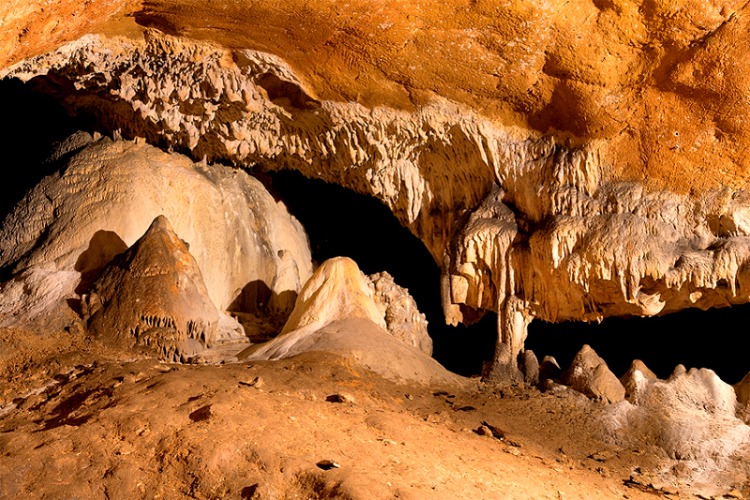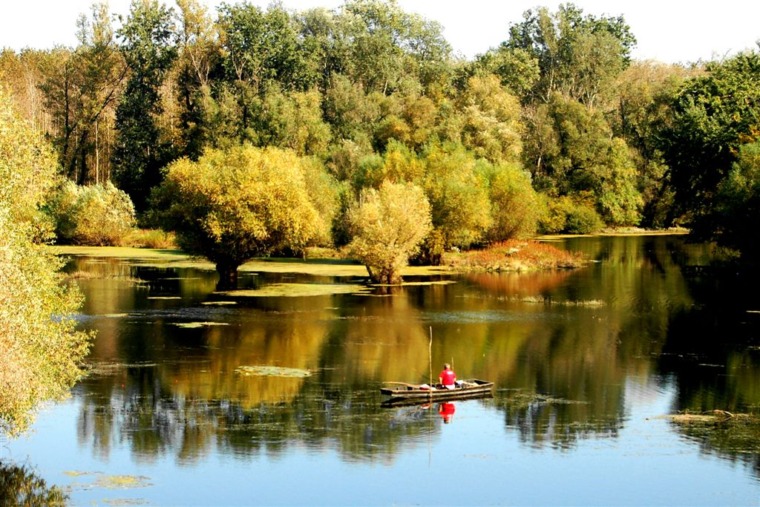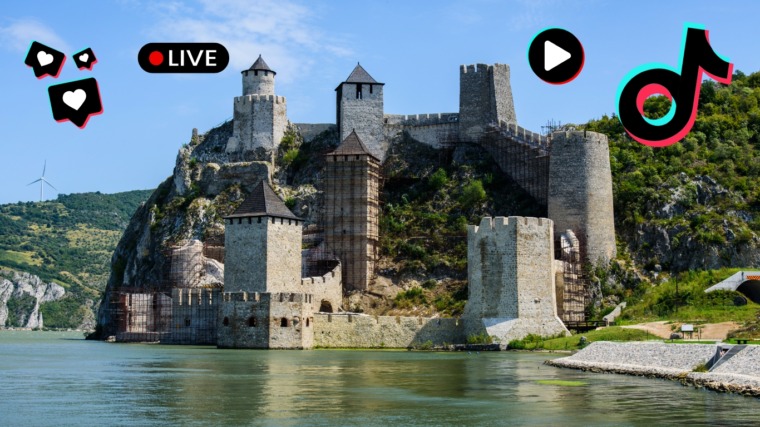

If you ever saw an inside of a cave that looks like it’s been plucked from someone’s imagination, the chances are it was that of the Zlot caves. Even though the Internet is jam-packed with their photos, nothing can make up for really being there yourself. With stone halls called the Weapon Room, Fairy’s Town and Concert Hall, huge rock formations such as the Colossus, the Godzilla, the Bison’s Head and sparkling water beds, there’s no chance the spectacular Zlot caves won’t spark your curiosity and lure you to their enchanting dens.
The eastern foothill of mt. Kučaj is rich in speleological localities. Believe it or not, there are 222 caves near the village of Zlot. And in this kingdom of stone halls exist a whole system of caves more than 10,000 years old.
The Mandina and the Vodena caves, the Hajdučica, the Vernjikica and Lazar’s cave are the names you want to remember. Together they form a cave complex called the Zlot caves. Located in eastern Serbia, near the entrance to Lazar’s canyon, the Zlot cave system has just recently attracted the attention of researchers.

Rich in unique ornaments and unbelievable legends, each of them is an explorer’s heaven, with the most spectacular ones being the Vernikica and the Lazar’s cave. Are you ready to hear stories which will surely make you want to visit them?
The Stone Halls and Gigantic Rock Formations of the Vernjikica Cave
The Vernjikica cave, located in the Lazar river canyon, 1,5 km away from Lazar’s cave, is what speleologists call a dry cave. It got its name from the Vlach word “var” which means limestone from which it was formed. And this is a very important fact.
Why? Because this type of rock is perfect for creating the most amazing cave ornaments. Spanning across 13,000 m2, the 1015 m long Vernjikica cave is famous for its gigantic stalagmites and stalactites of all sorts of unusual shapes and colours.

We’ll start from its breathtaking stone halls. First you have the “Priјеmnа” (Reception) hall, the “Kаskаdnа” (Cascade) hall, the “Vilingrаd” (Fairy’s Town) hall, the “Pоnоr” (Chasm) hall, the “Kоlоsеum” (Colosseum), the “Мrаmоrје” hall, the “Sаlа оružја” (Weapon Room) hall, the “Меrmеrnа” (Marble) hall and the “Sipаrskа” hall.
The most famous landmark of this cave is the Colosseum hall which is one of the biggest and tallest stone halls in Serbia. It’s 59 m high, has 60 m in diameter and got its name because of its circular shape. Having the prettiest cave ornaments, the Fairy’s Town hall is the prettiest one.

But what really draws everyone’s attention is what’s located in these stone halls. Speleologist gave the most interesting rock formations rather picturesque names. For example, when you enter the Fairy’s Town hall there is a 8 m high massive red column. The main feature of the Colosseum hall and the signature sign of the Veriknjice cave is the “Colossus” stalagmite which is 11,5 m tall. There’s is also a very unusually shaped 10 m high stalagmite rock formation called “Godzilla”.
In fact, every hall has its own “signature jewellery”. The Weapon Room got its name from the spear-, arrow-, dagger- and sword-shaped stalactites. The Marble hall features coral-like structures made from crystalline calcite. There are also the “Cave man”, the “Old woman”, the “Obelisk”, the “Hive”, the “Venus”, the “Silver fir” rock formations.

The Legends and Layers of the Lazar’s Cave
Over the Lazar’s river which flows through the canyon there is a huge hanging bridge which leads to the magnificent Lazar’s (or the Zlot) cave. This cave has two canals – a dry (fossil) and a river (active) one – both of which were formed by a cave river. This impressive 1592 m long cave stretches over 52,000 m2.
So much things make this amazing cave so special. Firstly, it is a multi-layered archeological site with artefacts such as pottery, tools and jewellery dating from the Copper, Late Bronze and Iron Age found at this locality. So, if you’re into archeology and history, this cave is a gem. You can even see and touch fossilized bones of prehistoric cave lions and bears.

Then there are the legends. During the Ottoman rule, this cave was a hiding place for hajduci (a term for Serbian freedom fighters). The Turks found out and barricaded the exit of the cave. However, a subterranean river spoiled their plans by flowing right through that obstacle. Another legend is that of the “Devojačka soba” (Maiden Room) hall. The hajduci used to hide Serbian girls so the Turks would take them to a harem. The corridor leading to the room narrows to that extent that only one person can squeeze through the entrance. Turks would push only head though first, and that’s how they lost them.
But cave animals, ancient civilizations and renegades weren’t the only inhabitants of this cave. In the Bat hall there are 24 out of 27 species of European bats. The “Dvorana slepih miševa” is closed for tourists due to the sensitive ecosystem.

Finally, the Lazar’s cave much like the Vernjikica cave has its own “set of stunning jewellery”. The “Ulаznа dvоrаnа” (Entry hall) and “Koncertna dvorana” (Concert hall) have their own outstanding ornaments. The most magnificent ones are the “Bison’s head”, the “Chandelier”, the “Fountain”, the “Orchestra”, the “Conductor” the “Lazar’s Tower”, which got its name because of Knez Lazar who hid here with his army.
This cave also has countless limestone beds which resemble small bathtubs. In the Lace hall visitors can see amazingly coloured, shimmering cave beds and throw a coin or two in a fountain which will, according to popular belief, bring them luck in love.

Both the Vernjikica and the Lazar’s cave, as well as Lazar’s canyon, have been proclaimed natural monuments of great importance.
Featured photo: Dalibor Tomić
Related Articles


Novi Sad Becomes the First Ramsar Wetland City in the Balkans
September 11, 2025
Serbia, Told By You – Bicycle, Smile & Rakija in Šumadija
September 10, 2025
Untranslatable? Serbian Words with a Unique Balkan Meaning
September 10, 2025
Serbia, Told By You – Memories of My Grandmother’s Belmuž
September 9, 2025
TikTok Guide to Serbia: The Most Photogenic Spots to Film
September 7, 2025



